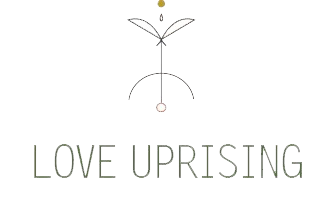— HORMONES & PMDD —
Fall in love with taking care of yourself,
body, mind and spirit.
Chronic and persistent conditions
create chaos and survival states.
It is up to you to discover the state beyond this.
Discover your inner strength and gain the tools that you need
to get out of chaos and into a deep place of
understanding.
Discernment awakens within as the deeper work
emerges and becomes more clear.
Faith and trust become a best friend.
The answer to the pain is in the pain.
Hormones and PMDD
PMDD is distinguished from PMS by the severity of symptoms, predominance of affective versus somatic symptoms, and a marked impairment in personal and/or social relationships—including feelings of hopelessness, self-depredation, and increased interpersonal conflicts. PMDD represents the most severe and disabling end of the spectrum of premenstrual disorders, and requires clear evidence of disability to diagnose.
The vast majority of women with PMDD have “normal” hormone levels. This does not apply to all women, however, as women with PMDD could potentially have other underlying hormone or health imbalances. If you are questioning if you have PMDD, it may be wise to get a Comprehensive Female Panel Blood Test to rule out any underlying disorders that may be causing symptoms.
Estrogen and PMDD
At mid-cycle, levels suddenly spike, triggering the release of an egg (ovulation). Hormones then fall just as quickly as they spike. During the rest of the month, estrogen levels climb and fall gradually. While doctors agree estrogen does have an effect on mood, it is not understood exactly how and to what extent. Although not proven by medical research, some holistic clinicians and doctors suspect that high levels of estrogen combined with low levels of progesterone is a cause for PMDD. This condition is referred to as Estrogen Dominance. Many women with PMDD will find, however, that trying to balance the hormones by adding more progesterone will actually make symptoms worse for the sufferer. Caution is advised when considering any kind of hormone therapy to treat PMDD.
Progesterone and PMDD
The hormone progesterone is an essential part of the menstrual cycle, especially when it comes to reproduction. The rise in progesterone after ovulation is essential for maintaining a healthy pregnancy. When an ovulated egg is left unfertilized, progesterone falls and bleeding begins. This post-ovulation rise and fall is called the Luteal Phase, and is typically when PMDD symptoms occur. In women without PMDD, progesterone can have a calming effect. Recent studies show that those with PMDD may have an increased sensitivity to Progesterone and experience increased activity in the emotional center of the brain. Many women with PMDD refer to themselves as “Progesterone Intolerant.“ All hormonal birth control methods will contain some form of Progesterone.
FSH and PMDD
Follicle-stimulating hormone (FSH) is a hormone found in humans and other animals. FSH regulates the development, growth, pubertal maturation and reproductive processes of the body. This hormone stimulates the creation and secretion of estrogen. FSH controlled by the hypothalamic gonadotropin-releasing hormone (GnRH). Gonadotropin-releasing hormone analogs (GnRH analogs or GnRH agonists) are sometimes used to treat PMDD by halting the production of FSH and in turn putting the body in a chemically induced state of menopause.
LH and PMDD
Luteinizing hormone (LH) is a hormone also controlled by the hypothalamic gonadotropin-releasing hormone (GnRH). In females, a sharp rise or surge of LH triggers estrogen production (ovulation) and development of the corpus luteum. In men, this hormone triggers the production of testosterone.
Commit to your Healing
If you are interested in more information, you may also check out:
https://iapmd.org





